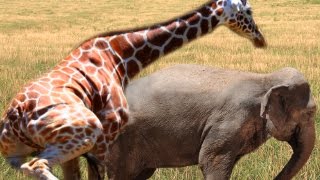Wednesday, 17 December, 2025г.
















Где искать: по сайтам Запорожской области, статьи, видео ролики
пример: покупка автомобиля в Запорожье
ELEPHANT MATING WITH FEMALE - Elephant Mate/ Breading Video
African elephants show sexual dimorphism in weight and shoulder height by age 20, due to the rapid early growth of males; by age 25, males are double the weight of females. However, both sexes continue to grow throughout their lives.
Female African elephants are able to start reproducing at around 10 to 12 years of age, and are in estrus for about 2 to 7 days. They do not mate at a specific time; however, they are less likely to reproduce in times of drought than when water is plentiful. The gestation period of an elephant is 22 months and fertile females usually give birth every 3 – 6 years, so if they live to around 50 years of age, they may produce 7 offspring. Females are a scarce and mobile resource for the males so there is intense competition to gain access to estrous females.
Post sexual maturity, males begin to experience musth, a physical and behavioral condition that is characterized by elevated testosterone, aggression and more sexual activity. Musth also serves a purpose of calling attention to the females that they are of good quality, and it cannot be mimicked as certain calls or noises may be. Males sire few offspring in periods when they are not in musth. During the middle of estrus, female elephants look for males in musth to guard them. The females will yell, in a loud, low way to attract males from far away. Male elephants can also smell the hormones of a female ready for breeding. This leads males to compete with each other to mate, which results in the females mating with older, healthier males.[38] Females choose to a point who they mate with, since they are the ones who try to get males to compete to guard them. However, females are not guarded in the early and late stages of estrus, which may permit mating by younger males not in musth.
Males over the age of 25 compete strongly for females in estrous, and are more successful the larger and more aggressive they are.[39] Bigger males tend to sire bigger offspring. Wild males begin breeding in their thirties when they are at a size and weight that is competitive with other adult males. Male reproductive success is maximal in mid-adulthood and then begins to decline. However, this can depend on the ranking of the male within their group, as higher-ranking males maintain a higher rate of reproduction. Most observed matings are by males in musth over 35 years of age. Twenty-two long observations showed that age and musth are extremely important factors; "… older males had markedly elevated paternity success compared with younger males, suggesting the possibility of sexual selection for longevity in this species." (Hollister-Smith, et al. 287).
Males usually stay with a female and her herd for only a few weeks before moving on in search for another mate. Less than a third of the population of female elephants will be in estrus at any given time and gestation period of an elephant is long, so it makes more evolutionary sense for a male to search for as many females as possible rather than stay with one group.
Теги:
Elephants Mating Breeding Wildlife Endangered Animals Animals Breeding Animals Mating Mammals Mammals Mating Best animals mating video Mating video Animal Mating video Elephant Elephant mating Elephant mating in wild animal mating wild animal mating elephant mating in wild wild Elephant mating animal sex sex mating amimal sex wild sex sex in wild elephant sex
Похожие видео
Мой аккаунт





